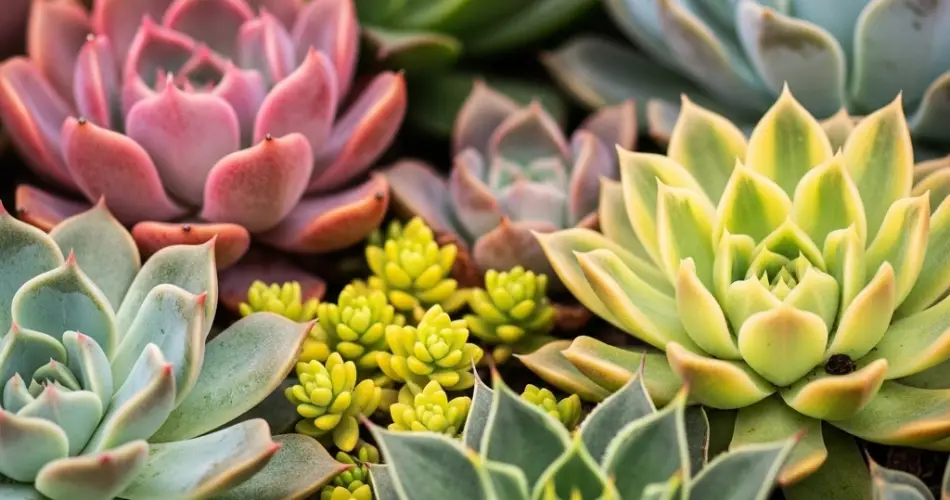Succulents have become incredibly popular thanks to their unique appearance, easy care, and ability to thrive with minimal attention. However, the secret to healthy, vibrant succulents lies not just in light and water but also in the right containers and soil. Choosing the appropriate pot and soil mix is essential for preventing root rot, promoting growth, and ensuring long-term plant health. Here’s a complete guide to selecting the best containers and soil for your succulents.
Why Container Choice Matters
Succulents originate from arid environments, where their roots are accustomed to quick-draining soil and dry conditions. That’s why the container you choose needs to mimic this natural setting. Poor drainage can lead to soggy soil, which in turn causes root rot — one of the most common causes of succulent death.
Best Containers for Succulents
1. Terracotta and Clay Pots
Terracotta and clay pots are among the best choices for succulents. These materials are porous, which means they allow air and moisture to move through the walls of the pot. This helps the soil dry out faster and reduces the risk of overwatering. Additionally, their earthy appearance complements the natural beauty of succulents.
2. Ceramic Pots with Drainage Holes
Ceramic pots are a stylish alternative, available in various colors and designs. When choosing ceramic containers, always ensure they have a drainage hole at the bottom. Without this feature, excess water remains trapped in the pot, which can lead to root damage.
3. Plastic Pots
Plastic containers are lightweight and inexpensive, making them a common choice. However, they don’t allow for much airflow and retain moisture longer than terracotta or ceramic pots. If using plastic, it’s crucial to have good drainage and monitor watering more closely.
4. Hanging Containers and Wall Planters
For creative indoor or vertical gardens, hanging containers and wall planters can work well — but only if they have proper drainage. Consider adding a layer of gravel at the bottom and use a fast-draining soil mix to help prevent water retention.
5. Repurposed Items
Old teacups, tin cans, or wooden boxes can be turned into succulent planters for a rustic touch. Again, make sure these have holes or drill some yourself. If drilling isn’t an option, use them as decorative outer covers for actual pots with drainage.
Drainage is Non-Negotiable
Regardless of the material, drainage is the single most important factor. Without a hole at the bottom, water pools and soaks the roots. If you fall in love with a pot that doesn’t have drainage, either drill a hole or use it only as a decorative outer shell (called a cachepot) — and place a smaller, draining pot inside.
The Ideal Soil for Succulents
Soil composition plays a critical role in succulent health. Unlike regular houseplants, succulents need soil that drains quickly and doesn’t hold moisture for too long.
1. Avoid Regular Potting Soil
Standard potting soil is often too dense and retains water for longer periods. This leads to soggy roots and fungal problems. Even potting mixes labeled for indoor plants usually need amendment to suit succulents.
2. Use Cactus or Succulent Mix
A commercial cactus or succulent mix is a great ready-made option. These blends are designed for fast drainage and have the right balance of sand, perlite, and organic material.
3. DIY Succulent Soil Mix
If you prefer to make your own, combine:
-
2 parts coarse sand or poultry grit (not beach sand)
-
2 parts potting soil (without moisture-retaining additives)
-
1 part perlite or pumice
This blend ensures air circulation, fast drainage, and reduced risk of root rot. You can adjust the ratio slightly depending on your climate — for example, add more sand in humid areas.
Extra Tips for Container and Soil Success
-
Add a bottom layer: In large containers, a thin layer of pebbles at the bottom can enhance drainage, though it’s not necessary if the soil is well-draining and the pot has holes.
-
Don’t use saucers that retain water: These can create a constant moist environment, especially if water collects and stays at the bottom of the pot.
-
Top with decorative rocks: A thin layer of gravel or small stones on top of the soil can prevent evaporation, discourage pests, and improve aesthetics.
Final Thoughts
By selecting the right container and soil, you’re giving your succulents the best environment to grow and thrive. Focus on drainage first — both in the pot and the soil — and everything else becomes much easier. With these basics in place, your succulents will reward you with long-lasting beauty and minimal upkeep.



